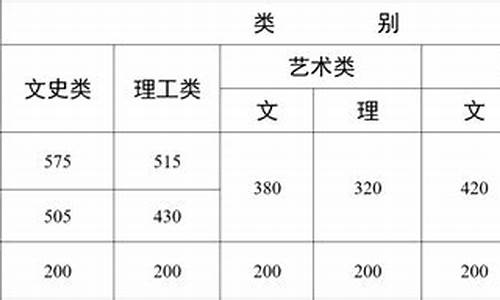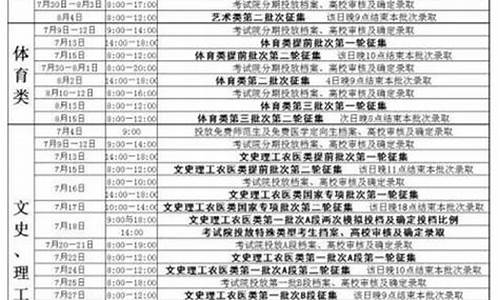高考动词教案-高考英语动词用法
1.英语高考非谓语动词的考点
2.英语高考必须掌握的所有系动词,谢谢,是所有的
3.巧用动词让高考作文有文
4.高考复习英语常用动词短语有总的归纳吗?
5.高考需要掌握的不及物动词有哪些(英语)
英语高考非谓语动词的考点

2011年高考英语第二轮热点专题复习——非谓语动词
规律方法
1.考查立意较低,主要考查的是非谓语的一些最基本的用法。但是,题目的设置注重了情景化和结构复杂化,加大了考生对题干句的理解难度。
2.设问的角度呈现出多样化趋势,不仅仅是非谓语间的互相干扰。
命题趋势
不容置疑,高考将继续加强对非谓语动词的考查,试题的特征将继续呈现出“情景化”和“设问角度的多样化”的趋势,但试题的难度将会有所控制。
突破方法
1.非谓语动词的用法是一个系统性、综合性很强的语言点,切不可记住几个条条框框就去乱套。真正领悟非谓语动词的用法要具备以下基础知识:
① 具有句子结构的知识,要分得清简单句与复合句,陈述句与祈使句。
② 具有简单句最基本的五种句型的知识,要分得清双宾语和复合宾语。
③ 具有扎实而丰富的动词知识,要分得清及物动词和不及物动词,双宾动词和复宾动词。一些最基础最常用的动词的用法应当烂熟于胸。
④ 具备各种复合句的知识,能够拆析30词左右长度的复合长、难句。
2.理解分析非谓语动词的句法功能,重点掌握不定式、动名词作宾语的区别;不定式、分词作补语的区别;不定式、分词作状语的区别;独立主格的用法;不定式、分词作定语的区别。
3.解答考查非谓语动词的题目时,一定要保持头脑冷静。一般要遵循以下解题思路:
① 解析句子结构,确定设空在句子中充当的功能(如状语、定语或宾补);
② 找准相关动词的逻辑主语,确定该动词与逻辑主语是什么关系(主动还是被动);
③ 搜索句子中相关的时间信息,确定非谓语动词的恰当形式;
④ 将该选项置入空中,看是否能够做到字从意顺,或是否能传达有效信息、完成交际任务。
知识清单
清单一 非谓语动词的句法功能
名称 主语 宾语 宾语补足语 表语 定语 状语
不定式 √ √ √ √ √ √
动名词 √ √ √ √
现在分词 √ √ √ √
过去分词 √ √ √ √
清单二 分词、不定式作宾补用法要点
一、分词、不定式作宾语补足语的区别
1.感官动词see, watch, observe, look at, hear, listen to, notice 等和使役动词he 后面的宾补有三种形式,即原形动词(不带to 的不定式)、现在分词和过去分词。现在分词表主动或正在进行,过去分词表被动或完成,动词原形表主动和完成。如:
I heard her sing an English song just now.
刚才我听见她唱了一首英文歌。
I heard her singing and English song when I passed by her room yesterday.
昨天经过她房间时,我听见她在唱英文歌。
I heard the English song sung many times.
我多次听到有人唱这首英文歌。
注意:不及物动词的过去分词作宾补表完成和状态。如:
I looked down at my neck and found my necklace gone. (状态)
I was surprised to find my hometown changed so much. (完成)
2.lee 后接三种形式作宾补时,其中的lee 保留了原来之义“留下”,但表达的确切之义应是“使……处于某种状态)。
lee sb. doing sth. 让某人一直做某事
(宾语和宾补之间是主谓关系,表示动作正在进行。)
lee sth. undone 留下某事未做
(宾语和宾补之间是动宾关系,表示被动和完成,一般以undone, unfinished, unsettled, untouched 为多)
lee sb. to do sth. 留下某人做某事
lee sth. to be done 留下某事要做
(不定式表示将来的动作。)
如:It’s wrong of you to lee the machine running.
你让机器一直开着是不对的。(主动,正在进行)
The guests left most of the dishes untouched, because they didn’t taste delicious.
客人们没有动大部分菜,因为它们尝起来不可口。(被动,完成)
He left, leing me to do all the rest work.
他走了,留下我一人去做剩余的工所有工作。(主动,将来)
We hurriedly ended our meeting, leing many problems to be settled.
我们匆匆忙忙导结束了会议,留下了很多问题等待解决。(被动,将来)
3.he, get 后接三种形式作宾补时,其中hee, get 表示“使、让、叫”之意。
① he sth. done = get sth. done “使/让某事由别人去做”(叫/让某人做某事)。如
I’ll he /get my bike repaired tomorrow.
此外,he sth. done 还表示“使遭受……”之意。如
Tom had his leg broken while playing football.
Mr. Smith had his house broken into while he was away on holiday.
② he sb. / sth. doing 使/让某人/物持续地做某事(现在分词表示主动,正在进行)
get sb. / sth. doing 使某人/物开始行动起来
如:The peasants had the tractor working day and night at the harvest time.
农忙时,农民们让拖拉机夜以继日地干活。
The captain got the soldiers moving toward the front after a short rest.
休息了片刻之后,上尉让士兵们开始朝前线行进起来。
注意:“he sb. doing”若用于否定句中,其中he 有“容忍”之意。如:
I won’t he you speaking to your parents like that.
我不会让你那样子跟你的父母说话。
Don’t he the water running all the time.
不要让水流个不停。
③ he sb. do sth. (get sb. to do sth. ) 使/让/叫某人去做某事
如:Mother had me go to the shop and buy some salt.
I can’t get him to stop smoking. He won’t listen to me.
二、下列动词后跟带to 的不定式作补语:
advise, allow, ask, beg, cause, encourage, expect, forbid, force, get, intend, invite, like, love, order, persuade, prefer, require, teach, tell, want, warn, wish, think, wait for, call on, depend on 等。如:
① An army spokesman stressed that all thd soldiers had been ordered to issue clear warning before firing any shots.
② The teacher asked us not to make so much noise.
③ The flu is believed to be caused by viruses that like to reproduce in the cells inside the human nose and throat.
三、不定式、现在分词作宾补小窍门
下列动词后在主动语态中用不带to 的不定式作补语,但在被动语态中要加上to:
它们是“吾看三室两厅一感觉”——5看(look at, see, watch, notice, observe);3使(make, let, he);2听(listen to, hear);1感觉(fell)。以上动词还可用现在分词作宾语补足语(5+3+2+1-2+4):即以上动词除let, make 外都可以用现在分词作宾语补足语,此外find, catch, keep, le 也可以用现在分词作宾语补足语。如:
At that time, I found him crying in the street.
He was caught stealing.
I’m sorry to he kept you waiting for such a long time.
The missing boys were last seen playing near the river.
清单三 不定式、分词作定语用法要点
一、不定式作定语
1.作定语的不定式如果是不及物动词,或者不定式所修饰的名词或代词是不定式动作的地点、工具等,不定式后面须有相应的介词。如:
The Browns he a comfortable house to live in.
There is nothing to worry about.
Please give me a knife to cut with.
Here is some paper for you to write on.
但是,不定式所修饰的名词如果是time, place 或way时,不定式后面的介词习惯上省去。如:
He had no money and no place to live (in).
We found a way to solve this problem (in).
2.当作定语的不定式所修饰的名词或代词是不定式动作的承受者时,不定式既可以用主动语态,也可用被动语态,但其含义有所不同。试比较:
He you anything to send ? 你有什么东西要寄吗?
(不定式to send 的动作执行者是“你”)
He you anything to be sent ? 你有什么要(我或别人)寄的东西吗?
(不定式to be sent 的动作执行者是“我”或“别人”)
3.用不定式作定语的几种情况:
不定式表将来:
I borrowed some books to read during my holiday.
用来修饰被序数词、最高级或no, all, any 等限定的中心词。如:
He was the best man to do the job.
She was the first woman to sin the gold medal in the Olympic Games.
Women and children were the first to get into the lifeboats.
用来修饰的词是抽象名词时,常见的有:ability, chance, idea, fact, excuse, promise, answer, reply, attempt, belief, way, reason, moment, time 等。如:
Do you he the ability to read and write English ?
I he to chance to go sight –seeing.
二、分词作定语
1.作定语的及物动词分词形式为:V –ing; being + 过去分词;过去分刻画 。当被修饰的名词与分词为主动关系时,用V –ing;当被修饰的名词与分词为被动关系且表正在进行时,用being + 过去分词;当被修饰的名词与分词为被动关系且表完成时,用过去分词。例如:
The houses being built are for the teachers.
The broken glass is Tom’s.
I he never seen a more moving movie.
2.作定语的不及物动词分词形式为:V –ing 和过去分词。V –ing 表示正在进行;过去分词表示已经完成。如:
falling lees 正落的叶子 fallen lees 落下的叶子
boiling water 正沸腾的水 boiled water 沸腾过的水(白开水)
三、不定式、过去分词和现在分词被动式作定语的区别
这三种形式作定语,主要是体现在动作的发生时间上。过去分词表示的动作或是在谓语所表示的动作之前发生,或是没有一定的时间性。如:
He you read the novel written by Dickens ?
He is man loved and respected by all.
Don’t use words, expressions, or phrases known only to people with specific knowledge.
现在分词的被动式作定语时表示的动作正在发生或是与谓语动词所表示的动作同时发生。如:
Listen ! The song being sung is very popular with the students.
不定式的被动式作定语时,表示一个未来的动作。如:
The question to be discussed at the tomorrow’s meeting is a very important one.
英语高考必须掌握的所有系动词,谢谢,是所有的
系动词
系动词又称联系动词,作为系动词,它本身有词义,但不能单独用作谓语,后边必须跟表语(也称补语),构成系表结构说明主语的状况、性质、特征等情况。
有些系动词又是实义动词,该动词表达实义时,有词义,可单独作谓语,例如:
He fell illyesterday.
(fall是系动词,后跟补足语,说明主语情况
He fell off theladder.
(fall是实义动词,单独作谓语。)
1)状态系动词
用来表示主语状态,只有be一词,例如:
He is a teacher.
(is与补足语一起说明主语的身份。)
2)持续系动词
用来表示主语继续或保持一种状况或态度,主要有keep, rest, remain, stay, lie, stand, 例如:
He always keptsilent at meeting.
This matter restsa mystery.
3)表像系动词
用来表示"看起来像"这一概念,主要有seem, ear, look, 例如:
He looks tired.
He seems (to be)very sad.
4)感官系动词
主要有feel, smell, sound, taste, 例如:
This kind of clothfeels very soft.
This flower smellsvery sweet.
5)变化系动词
表示主语变成什么样,有become, grow, turn, fall, get, go, come,run
He became madafter that.
She grew richwithin a short time.
6)终止系动词
表示主语已终止动作,主要有prove, trun out, 表达"证实","变成"之意,例如:
The rumor provedfalse.
The search proveddifficult. 搜查证实很难。
His plan turnedout a success. (turn out表终止性结果)
I、常见系动词错误及其成因:
(1)漏掉系动词
I afraid he won'tcome tomorrow .
( 2 )误用系动词
His hair changedgrey .(混淆了change 与turn,grow)
I.系动词分类:
一、根据系动词后所跟结构,分为两大类:完全系动词(其后只能跟表语的动词,如be)和半系动词(其后既可跟表语作系动词用法,也可跟宾语或状语作实义动词用,如look)
He looked sad atthe news.
(“看起来”,系动词用法)
He looks at aclever boy.
(“看着”,实义动词用法)
在英语中,某一动词是多义词,既有实义动词用法,又有系动词用法。常见的有:
listen, look ,touch ,hear,see ,sound ,feel, taste ,remain ,keep,stay, turn,become
二、根据系动词的意义,分为四类:
A.五大感官系动词 B.状态系动词
C.动态系动词 D.双谓语系动词
A.五大感官系动词,描述一种感官性质。由实义感官动词变化而来,都是半系动词
1.look“看起来像是”,后接adj.、n.、分词、介词短语、不定式等。
The girl bit herlips and looked thoughtful.
2.smell“闻起来”,后接adj.,分词。
The flowers smellsweet.
3.sound“听起来”,后接adj.,分词。
The music soundssweet.
4.taste“尝起来”,后接adj.,分词。
The les tastevery good.
5.feel①“摸起来,给……感觉”;②“觉得”,后接adj
The silk feelsvery soft.
You will feelbetter after a night’s sleep.
B.状态系动词:
1.be,“是”,完全系动词。
I am a student.
2.seem,“似乎,好像”,完全系动词。
They seem quitehy.
3.ear,“显得,看起来好像”,半系动词。
He eared tiredand sleepy.
It eared(tobe)a true story.
Now it ears tome that he may play an important part in settling the problem. (在我看来)
4.keep, “保持……的状态”,半系动词,后接adj或介词短语。
You’d better go to bed and keep warm.
5.remain,“仍是”,半系动词。
I remained silent.
6.stay“保持(某种状态)”,半系动词,后接adj.、过去分词。
The window stayedopen all the night.
7.prove “证明是”,半系动词,后接adj.,n.
The treatmentproved to be successful.
C.动态系动词:都属于半系动词,描述状态变化过程。
1.get“变成,变得……起来”,后可接形容词、分词、介词短语。
The days aregetting longer and longer.
The train didn’t get going again.
It’s nothing to get excited about.
My watch gets outof order.
2.fall“进入(某种状态),成为”,后常接以下形容词:
asleep, silent,ill, sick
The old man,unable to express himself, fell silent.
My father fell illand died.
3.grow“渐渐变得……起来,长得”
You will grow usedto it.
It’s growing warm.
4.turn“转变成(新的与原来完全不同的色彩或性质),变质(色)”。
Maple trees turnred in autumn.
It was cloudy thismorning, but fortunately it has turned fine.
He has turnedwriter.
(注意:此时writer之前无冠词a.)
5.go,“变成(某种坏的状态)”
The telephone hasgone dead.
The material hasgone a funny colour. (奇怪)
go之后常接的adj. 还有:bad, blind, wild, wrong, sour, hard, hungry,mad, red, with, anger, white, pale, blue, grey
6.become“变成,成为(好坏均可的情况)”
He became angrywith me.
It became dark.
They became goodfriends.
I becameinterested in drawing.
7.come,“变成为(已知的状态),证实为”,后接形容词或前缀un-的过去分词作表语,表示状态或情况的变化。
His wish to becomea pilot has come true.
If you look intothe matter, everything will come clear.
My shoelaces hecome undone.
后面常接的形容词还有:apart, dear(昂贵),natural,open, untied(松开)。
8.run,“变成”,后接adj.
The well has rundry.
The price ranhigh.
9.make,“达到某种状态[后接形容词],如sure, certain, merry, bold, free
We must makecertain of facts.
我们一定要弄清事实。
The Children makefree with the les.
孩子们随便吃苹果。
D.双谓语系动词
此类系动词既有系动词的功能,后接表语,又保留原实义动词本身的含义。例如:
The run rose red. 太阳升起红艳艳。
She stopped andstood quite still.
The book lay openon the table.
The snow lay thickon the ground.
He marriedyoung.
The window blew open.
III.系动词用法应注意的八个问题
1.系动词的进行时态应分情况讨论
一般,状态系动词无进行时态,而动态系动词有进行时态。但在某些情况下,状态系动词也有进行时态,表示两个用途:
(1)表示一种短暂的、反常的状态。如:
He is being kind.
他装出和蔼可亲的样子(一时而不能持久的性质)
(2)表示一种探询口气,使语言客气、生动、亲切。例如:
I hope you arekeeping well.
(语气委婉)
Are you feelingany better?
(语气亲切)
试比较:
Your hand feelscold.
你的手摸起来冰凉(无意识的静态性质)
不可以说:
Your hand isfeeling cold.(×)
The doctor isfeeling her pulse.
医生正在给她把脉(有意识的动态动作)
The soup tastesgood.
这汤的味道不错(静态性质,无进行时)
The cook istasting the soup.厨师在尝汤的味道。(动态动作,有进行时)
总之,系动词有无进行时态应随系动词的意义或其语境变化而变化。在概述某一动词的进行时态时,不能笼统地说feel,smell无进行时,应指出其意义及其语用环境。以smell为例
①smell作“嗅觉”的能力时,虽是实义动词,但指的是一种性质的存在状态不能用于进行时态,常与can, could, be able to连用。
The camels cansmell the water a mile off.
骆驼能嗅出一英里外有水。
②指“嗅、闻”的动作时,实义动词,可用于进行时态。
The girl issmelling the flower.
③smell指“含有……气味”,“发出……气味”等事物性质时,半系动词,无进行时态。
The dinner smellsgood.
2.系动词的时态与形容词的比较级连用的问题
某些含有变化意义的动态系动词如get, become, grow, turn等的进行时态可与形容词的比较级连用,表示渐进过程,其意思是“越来越……”。
He is growingtaller and taller.
Our life isgetting better and better.
The things aregetting worse.
3.所有半系动词的被动语态要分情况讨论
某动词在作系动词用时,无被动语态,而作实义动词用时,才有被动语态
不能说: The le is tasted good.
(因为taste此时是系动词,“尝起来”之意,指的是苹果的性质,无被动语态)
但可以说: The le is tasted by me.
(taste此时指“尝一尝”这一动作,有被动语态)
因此要注意半系动词在具体的语言环境中到底是系动词用法还是实义动词用法
4.瞬间动态系动词能否与时间段连用的问题
某些表示瞬间意义的系动词不能与“for+时间段,since+时间点,how long until+时间,by + 时间,so far”直接连用
①不能说:
He has become ateacher for 2 years.
应改为:
He has been ateacher for 2 years.
②不能说:He has turned writer since 3 years ago.
应改为:He has been a write since 3 years ago.
或It is two years since he turned writer.
③不能说:He got angry until his child came backhome.
应改为:He didn’t getangry until his child came back home.
5.系动词能接几种表语(从句)
系动词除了接adj.\n.\介词短语,某些adv.以外,还可接以下几种表语形式:
①能接as if/as though表语从句的系动词有:look,smell,sound,feel;ear(显得),seem(似乎)
It looks as if weare going to he snow.
He looked as if hehad just stepped out of my book of fairy tales.
It seems as if it werespring already.
②可用于“It+系动词+that从句”结构的有:seem, ear, 不可用be, look
It seemed that hehad made some serious mistakes in his work.
It eared thathe was talking to himself.
③能用不定式作表语的系动词有:be, seem, get, look, ear, prove, grow.
Her job is to lookafter the children.
He looks to be ayoung girl of twenty.
④能与there连用的系动词有:be,ear, seem.
There eared tobe only one room.
There seems(tobe)no need to go.
6.能用两种否定形式的系动词有两个:seem, ear.
It doesn’t seem that we can get our money back.
= It seems that wecan’t get our money back.
He seems not to beher father.
= He doesn’t seem to be her father.
The baby doesn’t ear to be awake.
= The baby earsnot to be awake.
7、几组易混系动词的区别
系动词的区别主要从两个方面作比较,一是其意义,二是其结构。
1)get, become, go, turn, grow“变成”
get:“变得”口语。后接形容词、现在分词、过去分词、介词短语、不定式作表语,但不能与名词直接连用。
become:“变成,成为(好坏情况均可)。”后接形容词、名词、过去分词作表语,不能与不定式连用。
go:“变成(某种由好到坏的情况)”,后接形容词、过去分词、名词作表语。
Turn:“转变成”强调与原来不同的、新的变化,如变质、变色等。后接形容词、不带冠词的名词作表语,后不接不定式。
grow:“逐渐变得……”,强调其变化过程。后接形容词、分词、不定式,不可直接跟名词。
2)look, seem, ear“好像”
三者作系动词时在意义上的区别:
look:“好像,看起来”,一般用于非正式场合,侧重指从本身外表特征上由视觉得到的印象。
seem :“似乎,好像”,指说话人内心的估计与判断,有一定依据,接近于实际情况。
ear:“显得,好像”,常用于正式文体中,指某事物或人给他人的表面印象,有时含有实质上并非如此之意。
He looks like hisfather. (指其长相看起来相像)
He seems like hisfather. (指说话人从个性方面得到的判断)
He ears likehis father.(指他的外貌、衣着给他人的印象)
3)keep, remain, stay“保持……状态”
①keep作系动词时,“保持……状态”,后接adj.或介词短语:alive,awake,cheerful,silent,dry,well,fit,fine,close,clean,hy
He you kept wellall these years?
I hope it willkeep fine.
In order to keepfit, all students go in for sports.
We’d better keep in touch.
②remain,系动词“仍然存在……状态”,后接adj.、过去分词、名词或介词短语,强调某种状态前后无变化。
The door remainedclosed.
门仍然关着。
Your room remainslike this.
你的房间依旧是这样子。
③stay,作系动词用时“保持……状态”,后接形容词、分词。
That fellow stayedsingle.
那个小伙子仍保持单身。
It’s easy to stay hidden.
躲起来很容易。
后常接的形容词有:calm, clean, fresh, healthy, young, open,awake, warm, fine, 常可与keep互换。如:
Stay/keepcalm(clean, fine, healthy, awake等)
①What you he said_______.
A.is soundedinteresting
B.soundsinteresting
C.soundinterested
D.listensinterested
②The class begins. Please keep________.
A.silent B.silence
C.the silence D.silently
③Look! Several people in the crowdseemed_______.
A.to be fighting B.to hefought
C.being fought D.hingfought
④How _____the song she sings sounds! I henever ______a better voice.
A.beautifully, sounded
B.beautiful, sounded
C.sweet, listened to
D.sweet, heard
⑤Her feeling about the marriage ______ratherstrange.
A.is looked B.is seemed
C.seems D.iseared
⑥John _____driver since two months ago.
A.became a B.has becomea
C.has turned D.has been a
⑦The ice_____ thick on the river.
A.is lain
B.lay
C.laid
D.lie
巧用动词让高考作文有文
要做到“有文”,就需要有“一字传神”的效果,而要收到这样的效果,就需选择、锤炼动词。如:
(1)“喂!一手交钱,一手交货!”一个浑身黑色的人,站在老栓面前,眼光正像两把刀,刺得老栓缩小了一半,那人一只大手,向他摊着;一只手撮着一个鲜红的馒头,那红的还是一点一点的往下滴。老栓慌忙摸出洋钱,抖抖的想交给他,却又不敢接他的东西。那人便焦急起来,嚷道:“怕什么?怎的不拿!”老栓还踌躇着;黑的人便抢过灯笼,一把扯下纸罩,裹了馒头,塞与老栓;一手抓过洋钱,捏一捏,转身去了。(《药》)
表述手的动作一共用了13个动词,其准确程度、生动程度几乎达到了无可更改的`地步。一个“摊”字把刽子手索款的架势活现了出来;而“抢”“扯”“裹”“塞”,既准确生动地表现了手所触到的四个不同对象,又贴切地反映出动作的急迫利索。对于洋钱,只一个“抓”,就可看出讹诈式的攫取。为了使所用动词准确贴切传神,在选用同义词时,需要根据表达对象的要求,严格区分同义词之间的细微差别。又如:
(2)如果我们惶惶不可终日,始终感到没有一个合适的位置,那么周围的一切就会变成主人,我们得跑前跑后地伺候着,我们得忽左忽右地奉承着,我们得上窜下跳地迎合着,我们得内揣外度地恭维着。(《位置》)
作者用“跑前跑后”“忽左忽右”“上窜下跳”“内揣外度”四个表示方向的词和“伺候”“迎合”“奉承”“恭维”四个表示态度的词,使语言错落有致,避免了重复,给人以美感。再如:
(3)他们没有豪言,没有壮语,只是平静地将浓于血的情感缝进儿子冬日的棉袄,女儿夏日的裙衫。儿行千里母担忧,如果你是一只远离了母亲的风筝,那么你身后的蓝天写满了母亲的叮咛。(《背景》)
其中的“缝”“写”令人耳目一新,耐人寻味。
高考复习英语常用动词短语有总的归纳吗?
l.动词+about\x0d\ speak/talk about 谈论 think about 思考\x0d\ care about 关心,对?有兴趣 bring about 引起,使发生\x0d\ set about 着手,开始 come about 发生\x0d\ hear about 听说 worry about 为?担心\x0d\2.动词+away\x0d\ throw away 扔掉 blow away 吹走\x0d\ carry away 拿走,使入迷 clear away 清除掉,消散\x0d\ die away 逐渐消失,减弱 pass away 去世\x0d\ wash away 冲走 take away 拿走,使消失\x0d\ put away 收拾起来,存起来 give away 背弃,泄漏,赠送\x0d\ wear away 磨掉,消耗 break away 摆脱\x0d\ send away 让走开 turn away 把?打发走\x0d\3.动词+back\x0d\ keep back 隐瞒,忍住 look back(on) 回顾\x0d\ hold back 控制住 give back 归还\x0d\ call back 回电话 take back 拿回,收回\x0d\4.动词+for \x0d\ run for 竞选 ask for 要求得到\x0d\ wait for 等候 stand for 代表,表示\x0d\ long for 渴望 hope/wish for 希望得到\x0d\ care for 关心,喜欢 beg for 乞求\x0d\ search for 查找 look for 寻找\x0d\ call for 需要,要求 hunt for 寻找\x0d\ change?for 用?换 charge?for 收费,要价\x0d\ ly for 申请 take?for 误以为?是\x0d\ seek for 寻找 come for 来拿,来取5.动词+down\x0d\ burn down 烧毁 break down 坏了,垮了,分解\x0d\ take down 记下,记录 turn down 调小,拒绝\x0d\ cut down 削减,砍倒 slow down 慢下来\x0d\ pass down 传下来 put down 记下,写下,镇压\x0d\ calm down 平静下来 bring down 使?降低,使倒下\x0d\ settle down 安家 come down 下落,传下\x0d\ tear down 拆毁,拆除\x0d\6.动词+at\x0d\ come at 向?袭击 shout at 冲(某人)嚷嚷\x0d\ run at 冲向,向?攻击 work at 干?活动(研究)\x0d\ tear at 用力撕 look at 看,注视\x0d\ stare at 凝视 glare at 怒视\x0d\ glance at 匆匆一瞥 laugh at 嘲笑\x0d\ knock at 敲(门、窗等) point at 指向\x0d\ smile at 冲(某人)笑 strike at 向?打击\x0d\ aim at 向?瞄准 shoot at 向?射击\x0d\ wonder at 惊讶 call at 拜访(地点)\x0d\7.动词+from\x0d\ differ from 与?不同 suffer from 受?苦\x0d\ hear from 收到?来信 die from 因?而死\x0d\ keep/stop/prevent?from阻止? learn from 向?学习 \x0d\ result from 由于 date from 始于?时期 \x0d\ separate?from 把?分离开 \x0d\8.动词+of\x0d\ think of 想到 dream of 梦到\x0d\ consist of 由?组成 speak of 谈到\x0d\ rove of 赞成 die of 死于\x0d\ talk of 谈到 hear of 听说\x0d\ complain of 抱怨 become of 发生?情况,怎么啦\x0d\9.动词+off\x0d\ start off 出发 set off 出发\x0d\ lee off 中断 show off 炫耀\x0d\ get off 下车 take off 脱下,起飞\x0d\ see off 送行 ring off 挂断电话\x0d\ put off 延期,推迟 come off 脱落,褪色\x0d\ cut off 切断,断绝 fall off 跌落,掉下\x0d\ keep off 避开,勿走近 go off 消失;坏了,爆炸,不喜欢\x0d\ knock?off 把?撞落 break off 打断\x0d\ pay off 还清 carry off 携走带走,赢得\x0d\ get off 脱下(衣服等) give off 散发出\x0d\ turn(switch) off 关掉\x0d\10.动词+on\x0d\ depend on 依靠 rely on 依靠\x0d\ insist on 坚持 carry on 继续,进行\x0d\ keep/go on 继续 spend?on 在?花钱\x0d\ put on 穿上,戴上,上演 call on 拜访\x0d\ move on 继续移动,往前走 live on 以?为生\x0d\ feed on 以?为生 bring on 使?发展\x0d\ take on 雇用,呈现(新面貌等) try on 试穿\x0d\ he on 穿着 pass on 传授,传递\x0d\ look on 旁观 turn(switch) on 打开\x0d\11.动词+out\x0d\ break out 爆发 point out 指出\x0d\ pick out 选出 figure out 算出,理解\x0d\ burst out 进发 bring out 阐明,使表现出\x0d\ carry out 执行,进行 help out 救助\x0d\ hold out 坚持下去 set out 出发,着手,摆放\x0d\ wear out 穿破,使?疲劳 turn out 结果是,生产,培养\x0d\ make out 理解,看清楚 come out 出版,出来\x0d\ cross out 划掉 lee out 省略,删掉\x0d\ keep out(of) 使不进入,挡住 work out 算出,想出办法等\x0d\ find out 查出,弄明白 give out 散发,分发,用完\x0d\ try out 试用,试验 look out 当心,提防\x0d\ put out 扑灭 speak out 大胆讲出\x0d\ hand out 散发 send out 发出,派遣\x0d\ run out 用完 go out 熄灭\x0d\ let out 泄漏,发出(声音),出租 die out 灭绝\x0d\12.动词十in\x0d\ give in 让步 hand in 上交\x0d\ bring in 引进,使得到收入 drop in 拜访\x0d\result in 导致 succeed in 在?获成功\x0d\ join in 参加 take in 接纳,吸收,改小\x0d\ get in 收获,进入 break in 强制进入,插话\x0d\ fill in 填写 call in 召集,来访\x0d\ cut in 插入 persist in 坚持\x0d\ look in 来访,参观\x0d\13.动词十into\x0d\ look into 研究,调查 turn into 变成\x0d\ burst into 闯入,进发 divide?into 把?分成\x0d\ change?into 把?变成 put/translate?into 把?译成\x0d\ run into碰到 send sb to/into sleep 使进入状态\x0d\14.动词+over\x0d\ turn over 翻倒,细想 think over 仔细考虑\x0d\ go over 审阅,检查,研究 look over 翻阅,检查\x0d\ get over 克服 run over 压死,看一遍\x0d\ take over 接管,接替 watch over 看守,照看\x0d\ fall over 跌倒,摔倒 roll over 翻滚\x0d\15.动词十to\x0d\ belong to 属于 object to 反对\x0d\ refer to 谈到,涉及,参阅 point to 指向\x0d\ turn to 向?求助,查阅 stick/hold/keep to 坚持,忠于\x0d\ see to 处理,料理 come to 共计,苏醒\x0d\ reply to 答复 get to 到达\x0d\ bring to 使苏醒把?比作 compare?to 与?相比;把?比作\x0d\ agree to 同意 write to 写信给\x0d\ supply?to 为?提供 lead to 导致,通向\x0d\ add to 增添 attend to 处理,专心,照料\x0d\ devote?to 贡献给\x0d\16.动词+up\x0d\ grow up 成长,长大 give up 放弃,献出\x0d\ build up 建立 set up 架起、建立\x0d\ put up 搭起,架起,安装,住宿,张贴,盖起\x0d\ do up 整理,包装,打扮 \x0d\ go up 增长,上涨get up 起床,站起 \x0d\ pick up 拾起,学会,用车,来接,收听到\x0d\ bring up 抚养,呕吐,提出 出现\x0d\ turn up 开大(音量等),出席\x0d\ stay up 挺住,熬夜\x0d\ take up 开始学,从事,占据\x0d\sit up 熬夜 eat up 吃完\x0d\ use up 用完 tear up 撕碎\x0d\ lay up 储存 make up构成,组成 编造 弥补\x0d\ cut up 切碎 join up 联结起来,参军\x0d\ end up 总结 come up 上来,长出,出现\x0d\ speed up 加快速度 throw up 呕吐\x0d\ clear up 整理,收拾,放晴 look up 查找,找出\x0d\ bum up 烧毁 catch up 赶上\x0d\ hurry up 赶快 fix up 修理,安排,装置\x0d\ keep up 保持 hold up 耽搁,使停顿\x0d\ send up 发射 ring up 打电话\x0d\ open up 开创,开辟 divide up 分配\x0d\ break up 分解\x0d\17.动词十through\x0d\ get through 通过,干完,接通电话 \x0d\ look through 翻阅,看一遍,仔细查看\x0d\ go through 审阅,检查,学习 \x0d\ put?through 接通电话 see through 识破 \x0d\ check through 核对 pull through 渡过危机,康复\x0d\18.动词+with\x0d\ deal with 处理,对付 do with 处理,需要\x0d\ meet with 遇到,遭受 talk with 同?交谈\x0d\ agree with 同意,与?一致 compare with 与?相比\x0d\ combine with 与?相联合 equip?with 以?装备\x0d\ cover?with 用?覆盖 begin with 以?开始\x0d\ end up with 以?结束 supply?with 以?供给\x0d\ provide?with 以?供给 play with 玩,玩弄\x0d\19.三词以上的短语动词\x0d\ add up to 总计 break away from 摆脱\x0d\ keep away from 避开,别靠近 do away with 废除\x0d\ look down on 轻视 look up to 仰望,尊敬\x0d\ put up with 忍受 catch up with 赶上\x0d\ keep up with 赶上 run out of 用完\x0d\ make up for 弥补 go on with 继续\x0d\ get on(along) with 和?相处 look forward to 盼望\x0d\ get close to 接近 take hold of 握住\x0d\ get out of 逃避,避免 get down to 认真开始\x0d\ set fire to 放火烧 pay attention to 注意\x0d\ take notice of 注意 set an example to 为?榜样\x0d\ do well in 在?干得好 pay a visit to 访问\x0d\take a photo of 拍?照片 take the place of 取代
高考需要掌握的不及物动词有哪些(英语)
高考英语应该掌握的不及物动词
英语中按动词后可否直接跟宾语,可把动词分成及物动词和不及物动词。
不及物动词:字典里词后标有vi. 的就是不及物动词。不及物动词后不能直接跟有动作的对象(即宾语)。若要跟宾语,必须先在其后添加上某个介词,如to,of ,at后方可跟上宾语。具体每个动词后究竟加什么介词就得联系动词短语了.
常用的不及物动词 ear ,Appear calm come ,Come easy (safe)
go ,Go mad (crazy, bad, sour, wrong, crazy, hungry, blind) get ,Get angry (ill, wet, excited, married, paid) fall ,Fall asleep( fall ill, fall short, fall flat) feel ,Feel good (sleepy) keep ,Keep quiet (silent) look ,Look fit (well, young, tired)
make, Make certain (sure, ready, a good teacher) prove ,Prove an effective method (correct, accurate) remain ,Remain still (unchanged) rest,Rest satisfied (content) rise, Rise red seem ,Seem hy stand ,Stand still
stay ,Stay young (stay fresh, the same) turn, Turn teacher =become a teacher (yellow) turn out ,Turn out true 用法举例
Look carefully! (注意:carefully 是副词,不是名词,故不作宾语) look at 看…….+宾语 Look at me carefully! (me是代词,作宾语) (at是小范围 in是大范围)
如: The students work very hard.学生们很努力地学习。 She apologized to me again. 她再次向我道歉。
The accident hened yesterday evening.昨天晚上发生了事故。 与及物动词的区别
及物动词与不及物动词的区别从是否需要宾语来分,实义动词分为及物动词和不及物动词两类。
1)及物动词 后面必须跟宾语意义才完整的实义动词,叫做及物动词(transitive verb)。如: I believe that the committee will consider our suggestion.我相信委员会将会考虑我们的建议。
“How long can I keep the book ?”Harry asked.哈里问:“这本书我可以借多久?” 2)不及物动词 本身意义完整后面不须跟宾语的实义动词,叫做不及物动词(intransitive verb)。如: Birds fly.鸟会飞。
It hened in June 1932.这件事发生于一九三二年六月。 My watch stopped.我的表停了。
She spoke at the meeting yesterday evening. 她在昨天晚上的会上发了言。 3)兼作及物动词和不及物动词 英语里有不少实义动词可以兼作及物动词和不及物动词。这样的动词又有两种不同的情况:
a)兼作及物动词和不及物动词时,意义不变。试比较: Shall I begin at once?我可以立刻开始吗?(begin作不及物动词)
She began working as a librarian after she left school.她毕业后当图书馆管理员。(begin作及物动词)
When did they lee Chicago?他们是什么时候离开芝加哥的?(lee 作及物动词) They left last week. 他们是上周离开的。(left 作不及物动词) b)兼作及物动词和不及物动词时,有时意义不尽相同。如: Wash your hands before meals.饭前要洗手。 Does this cloth wash well? 这布经得起洗吗?
4) 与汉语的比较 有时英语动词的及物和不及物的用法,与汉语的用法不一样,请注意下列两种情况:
a)有的动词在英语里只能用作不及物动词,而汉语则可用作及物动词,如arrive到达,agree同意,1isten听。英语里这些动词后面常接介词。如:
We arrived at the railway station at noon.我们于中午到达火车站。(at不能省去)(比较:We reached the railway station at noon.)
Everybody listened to the lecture with great interest.每个人都很有兴趣地听讲课。(to不可省去)(比较:We all heard the lecture.)
Do they agree to the plan?他们同意这个吗?(to不可省去)
b)有的动词在英语里能用作及物动词,而在汉语里则不能用作及物动词,如serve为…服务。 Our children are taught to serve the people wholeheartedly.我们的儿童被教以全心全意为人民服务
及物动词后可以加宾语,不及物动词后不可以加宾语
动词的及物不及物是在英语学习中必须解决的首要问题。动词及物与不及物通常有以下几种情况:
a.主要用作及物动词。及物动词后面必须跟宾语。可以用于:"主+谓+宾";"主+谓+双宾";"主+谓+宾+宾补"结构。如:
He reached Paris the day before yesterday. Please hand me the book over there. They asked me to go fishing with them.
类似的还有:buy, catch, invent, found, like, observe, offer, prevent, promise, raise, find, forget, receive, regard, see, say, seat, supply, select, suppose, show, make, take, tell.... b.主要用作不及物的动词。不及物动词后面不跟宾语。只能用于:"主+谓"结构。 This is the room where I once lived.
类似的还有:agree, go, work, listen, look, come, die, belong, fall, exist, rise, arrive, sit, sail, hurry, fail, succeed....
c.既可以用作及物又可以用作不及物的动词,其意义不变。如begin 都是作"开始"讲。everybody , our game begins. let us begin our game.
类似的还有:start, answer, sing, close, consider, insist, read, learn, prepare, pay, hurt, improve....
d.既可以用作及物又可以用作不及物的动词,其意义完全不同。
这类动词作不及物动词是一个意义;而作及物动词时却是另一个意义。如lift作不及物动词时是指烟雾的"消散"。we saw the mountain when the clouds lifted. 作及物动词时是"升高;举起"。 He lifted his glass and drank.
类似的还有:beat vi.跳动 vt. 敲、打; grow vi.生长 vt. 种植 play vi.玩耍 vt. 打(牌、球),演奏 smell vi.发出(气味) vt. 嗅 ring vi.(电话、铃)响vt.打电话 speak vi.讲话 vt. 说(语言) hang vi. 悬挂 vt. 绞死 operate vi.动手术 vt. 操作 需要注意的一点是:少数不及物动词唯一可跟的宾语是同源宾语,如:I dreamed a dream last night.
一些动词应用中只能用主动表示被动。
1、 Need, want, require(要求,需要), deserve(应得,值得), be worth值得),not bear(经不住) 后面接doing主动表被动。
The book is worth reading. 这本书值得一读。
The old building requires repairing. 这座古建筑需要修了。
These young seedlings will require/need looking after (=need to be looked after) carefully.?这些幼苗将需要小心的照管。 Your hair wants/needs cutting (needs to be cut).?你的头发该剪了。
2、不定式作定语,放在被修饰词后面,与前面被修饰的名词或代词有动宾关系,又在句子中与另一名词或代词有主谓关系,不定式要用主动表被动含义。
I he much work to do. 我有许多要做的事情。(与work有动宾关系,与I有主谓关系) Tom is looking for a room to live in. Tom在找一间住的房间。(与room有动宾关系,与Tom 有主谓关系)
He has a family to support.?他要维持一个家庭。(与family有动宾关系,与he有主谓关系) 3、不定式修饰作表语和宾语补足语的形容词时,结构:主语+系动词+形容词 + 不定式; 动词+宾语+形容词+不定式。如果形容词是表示难易、利弊等含义,如
difficult, easy, comfortable(舒适的), convenient(便利的,方便的), hard, cheap, expensive, 等,不定式用主动表被动。
The question is difficult to answer. 这个问题很难回答。 The work is easy to do. 这项工作很好做。
I found the car comfortable to ride in. 我觉得这种车很好坐。 That makes poetry difficult to write. 那就使得诗很难写。
4、在be to结构中的一些不定式:这种结构中的不定式通常应用主动表被动。下列动词用不定式的主动形式表示被动意义: Who is to blame for starting the fire?这场火灾应由谁负责?
You are to blame for the accident. 你应为这事受动责备。 The house is to let.此房出租。
A lot remains to do.还剩下许多事情要做。
5、系动词没有被动形式,但有些系动词常表示被动意义。常见的有taste(吃起来), sound (听起来), prove(证明是), feel(摸上去感到), look(看起来),smell(闻起来)等。
6.一些与can''t(不能)或won''t(不会)连用的动词。常用的有: lock(锁住), shut(关上) , open(打开), act(上演), write(写),cut(砍,切),wear(穿,戴)等,用作不及物动词时,用主动表被动。
7、一些动词如sell(销售) , wash(洗), clean(打扫), burn(燃烧), cook(煮)等与副词如well(好), easily(容易地), perfectly(十分地)等连用 ,描会事物的特性,用主动表被动,结构是主语+动词+加副词。例如:The book sells well.这种书很畅销 These clothes wash easily.?这些衣服很易洗。The pen writes well. 这笔很好写。
8、主语much, a great deal, little, what等,其表语如是不定式,则用不定式的主动表被动。 What is to do? 做什么? Much is to do. 太多要做的事。
9、在“there be”句型中作主语的定语如果现在分词时,所用的现在分词要用主动表被动意义。 There is nothing doing these days. 这些天没事干。 I see there’s a good idea planning. 我知道又在打好主意。
声明:本站所有文章资源内容,如无特殊说明或标注,均为采集网络资源。如若本站内容侵犯了原著者的合法权益,可联系本站删除。












